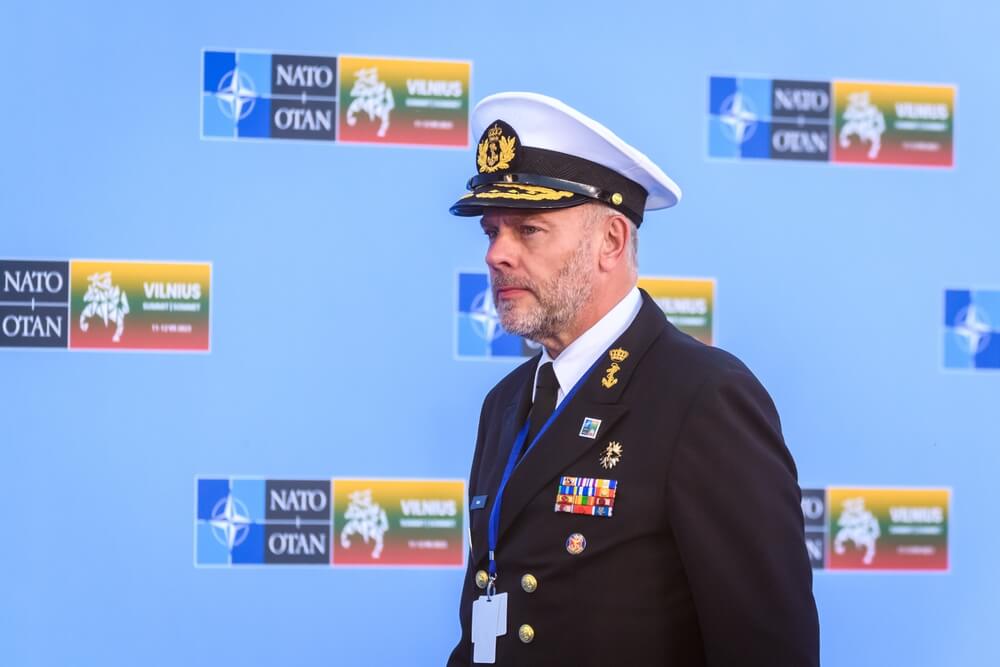It has been 36 years since NATO organised drills in Europe on such a large scale, as planned for next week.
The Alliance had 16 member states in 1988 when it conducted the Reforger exercise on European soil, the last of such scale during the Cold War. 125.000 soldiers participated in it. The goal was to practise the rapid transfer of troops to Germany in case of an attack by the Warsaw Pact.
Steadfast Defender 2024 starts next week and will last until the end of May. All 31 NATO members will perform war games with around 90,000 soldiers - the largest drill since the Cold War.
Most countries that represented a threat to Germany in 1988 are now members of NATO, and their safety is the principal topic of the forthcoming drills.
"Old enemies are reanimated. Battle lines are being redrawn”, said UK Defence Secretary Grant Shapps, announcing the participation of 20,000 British troops in forthcoming NATO exercises.
The threat is real
It is not without reason that Steadfast Defender 2024 makes an allusion to the Cold War, where the large number of participants is only one aspect that evokes memories of mass drills from several decades ago.
Russia's aggressive behaviour, which culminated in the aggression against Ukraine, forced NATO to reactivate its defence plans against a potential Russian attack after several decades.
The threat is real. Last year's NATO summit in Lithuania confirmed this, designating Russia as the primary threat to the members of the Alliance.
The forthcoming NATO drills are the first significant demonstration of the Alliance's plans to protect some of its regions, which might be directly exposed to Russia's military actions
The forthcoming drills in Europe are the first significant demonstration of the Alliance's plans to protect some of its regions, which might be directly exposed to Russia's military actions.
These exercises will be performed in 3 Baltic member states, followed by Poland, Germany, Norway and Romania. The practice of transferring troops to potential crisis zones will be a significant part of the exercise.
This also represents the realisation of part of the plans resulting from the Russian aggression against Ukraine, according to which, at least in theory, about 300,000 troops would be ready for deployment on NATO's eastern borders within 30 days.
Support to Ukraine
The manoeuvres will attract significant attention from Russia, given their large- scale, duration, complexity, and particularly the terrain on which they will take place - Russia's neighbourhood.
As its aggression against Ukraine approaches the end of its second year, it also means that Moscow will be forced to designate part of its resources to monitoring exercises and to the reinforcement of troops in its western and northern regions.
This is a favourable circumstance for the Ukrainian defence. But much more, a demonstration of NATO's readiness to engage against Russia, which is a significant part of the forthcoming manoeuvres.
The exercises are a tangible message to the Eastern members of NATO that they should feel the protection coming from their membership in the Alliance
The exercises are a tangible message to the Eastern members of NATO that they should feel the protection coming from their membership in the Alliance.
Poland and the Baltic states have justified fears that they might be under attack from Russia, if the conflict from Ukraine starts to spill over. Romania also, because of Russia's aspirations for a part of neighbouring Moldova and because of its strategic positioning on the Black Sea.
The head of the Polish National Security Agency, Jacek Siewiera, estimated last December that the countries of NATO's eastern bloc have a maximum of 3 years ahead of them to prepare for the possibility of an attack from Russia.
“This is the time window when we have to create a capability on the eastern flank that would provide a clear signal deterring aggression”, said Siewiera.
Deterrence
Therefore, deterrence is another significant motive of the forthcoming NATO exercises. This is the reason for the participation of the largest number of troops since the end of the Cold War and numerous modern weapons.
NATO announced that more than 50 ships and 80 fighter jets, helicopters, drones, and at least 1,100 combat vehicles will participate in Steadfast Defender.
 We have to understand that it's not for granted that we live in peace and that's why we have plans, that's why we're preparing for conflict - Admiral Rob Bauer
We have to understand that it's not for granted that we live in peace and that's why we have plans, that's why we're preparing for conflict - Admiral Rob Bauer
Part of the deterrence strategy is that this is the first opportunity for Finland's official participation as a new member of NATO in an exercise of this scale. The participation of the armed forces of Sweden was also announced, even though it is not yet a full member.
NATO wants to demonstrate internal unity, with which it met the beginning of Russia's aggression against Ukraine almost 2 years ago, but, in the meantime, it has been questioned due to political disagreements in some member countries.
In this respect, the forthcoming exercise will be a tangible warning to the public in many NATO member countries that they are not immune to the potential danger of a major conflict.
“We have to understand that it's not for granted that we live in peace and that's why we have plans, that's why we're preparing for conflict”, said NATO Military Committee Chairman, Dutch Admiral Rob Bauer.